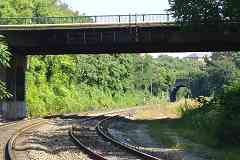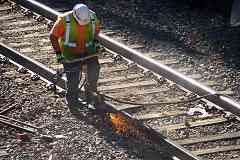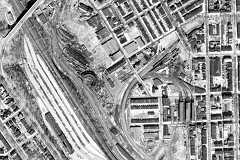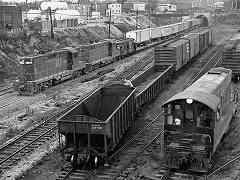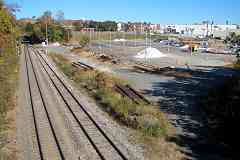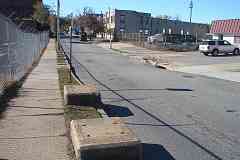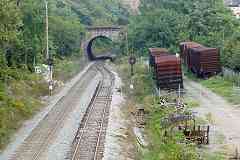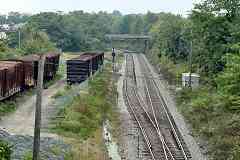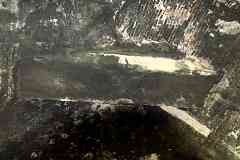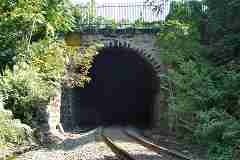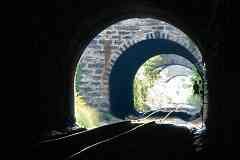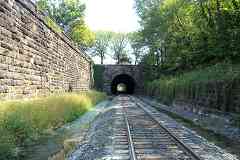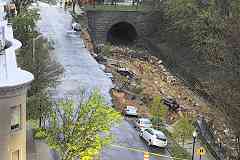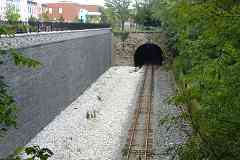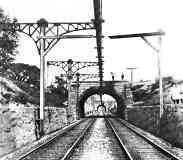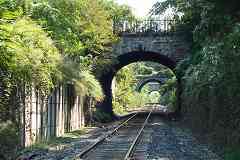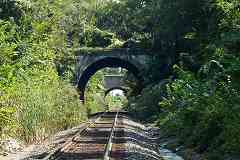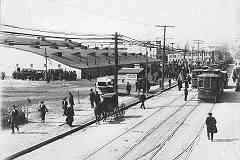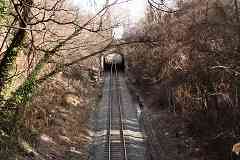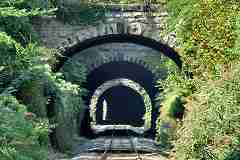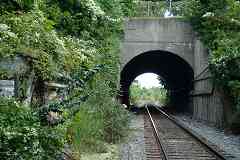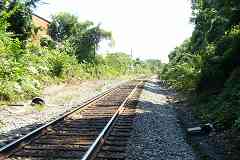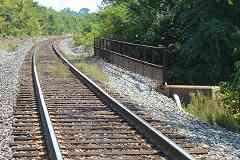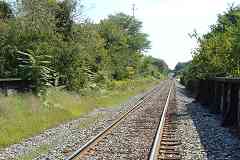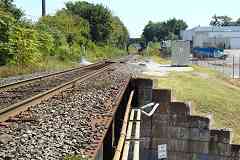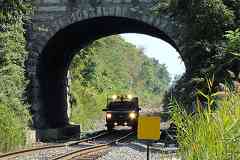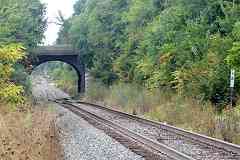|
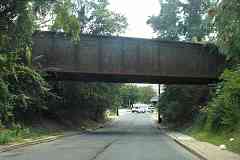 In this vicinity, the Belt Line spans several city streets via
bridges of similar designs. Rather than show them all, I'll
include only a few notable ones, such as this over Garrett Avenue,
named for B&O President John W. Garrett.
In this vicinity, the Belt Line spans several city streets via
bridges of similar designs. Rather than show them all, I'll
include only a few notable ones, such as this over Garrett Avenue,
named for B&O President John W. Garrett.
Garrett was also a founding trustee of Johns Hopkins University,
just one of many connections between the railroad and the school.
Pictured at right (courtesy the university) is the B&O stock
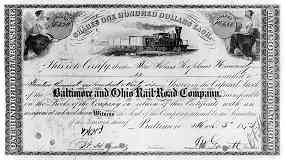 certificate signed by Garrett that represents the bequest of Johns
Hopkins that established the school. On the certificate, a sharp-eyed
reader may notice the illustrated locomotive's lack of both an
American-style pilot and external drive rods.
certificate signed by Garrett that represents the bequest of Johns
Hopkins that established the school. On the certificate, a sharp-eyed
reader may notice the illustrated locomotive's lack of both an
American-style pilot and external drive rods.
Though B&O did have inside-drive 4-4-0 engines (designs named "Dutch
Wagon" and "Yankee Clock"), few examples were built. That suggests this
certificate was engraved/printed in Britain where locomotives of that
style were more common. Presumably Garrett himself approved the certificate
design and either did not realize these details or chose to ignore
them. Perhaps it should not surprise that the Garrett-era of B&O
is generally not considered the railroad's best, to put it mildly.
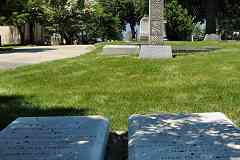 The Garrett name is also known to numismatists after his grandson
donated to the university one of the finest private coin collections
ever assembled. One can follow Garrett Avenue southwest until
reaching Green Mount Cemetery where both Garrett and Hopkins
are buried in adjacent family plots (left).
The Garrett name is also known to numismatists after his grandson
donated to the university one of the finest private coin collections
ever assembled. One can follow Garrett Avenue southwest until
reaching Green Mount Cemetery where both Garrett and Hopkins
are buried in adjacent family plots (left).
Link:
Garrett biography at Wikipedia
| 